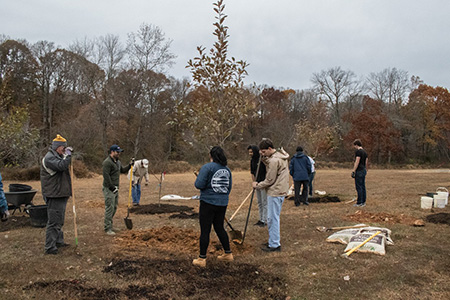Purpose
 The purpose of the Tree Preservation and Planting Fund (TPPF) is to support efforts by the Fairfax County government and the community at large to protect, manage and enhance its urban forest resources. The TPPF is a fiscal mechanism established to collect, manage, disburse, and track funds specifically used to support programs and policies relating to the preservation and management of existing forest tracts; and the planting of new trees by governmental and non-profit entities on both public properties and commonly owned open space. The following are examples of programs and policies that the TPPF could be used to support:
The purpose of the Tree Preservation and Planting Fund (TPPF) is to support efforts by the Fairfax County government and the community at large to protect, manage and enhance its urban forest resources. The TPPF is a fiscal mechanism established to collect, manage, disburse, and track funds specifically used to support programs and policies relating to the preservation and management of existing forest tracts; and the planting of new trees by governmental and non-profit entities on both public properties and commonly owned open space. The following are examples of programs and policies that the TPPF could be used to support:
- Tree planting programs that support a regional urban forestry measure in future Metropolitan Washington Area Ozone Non-attainment Air Quality Plans.
- Components of the Board of Supervisors’ Environmental Agenda relating to the conservation of trees, and forests; and the conservation of other natural resources such as air, water, and soil when tree conservation practices can be used to conserve these resources.
- Components of the Fairfax County Tree Action Plan relating to the conservation of trees, and forests and other natural resources.
- Components of the Fairfax County Park Authority Natural Resource Management Plan that relate to the conservation and management of tree resources.
- Components of watershed management plans that relate to tree planting and the need for conserving tree cover to protect water quality.
- Tree-related programs or projects that are identified in the annual Environmental Improvement Plan.
- Tree-related projects, matters, policies and ordinances approved by the Board of Supervisors

